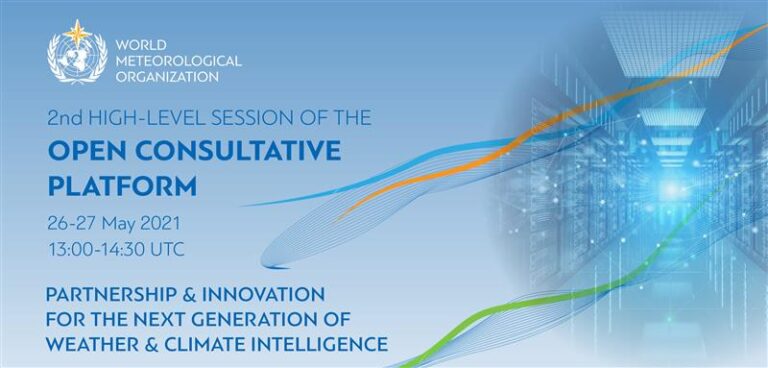The World Meteorological Organization (WMO) has reported on its second top-level dialog session on the future of weather and climate forecasting, which was held on May 26-27. The session is part of an ongoing drive to strengthen collaboration and public-private engagement (PPE) in order to support climate adaptation, sustainable development and build resilience.
The second high-level session of the Open Consultative Platform, held virtually thanks to UKi Media and Events – the company behind Meteorological Technology International magazine and Meteorological Technology World Expo – focused on two priority challenges: the future of weather and climate forecasting, and the evolving roles and responsibilities of the national meteorological and hydrological services (NMHSs).
The session was hosted by the WMO secretary-general, professor Petteri Taalas, and WMO president, professor Gerhard Adrian, and brought together leaders from NMHSs, private companies, meteorological equipment providers, the research community and academia.
“Undoubtedly, the 2020s will bring significant changes to the weather, climate and water community: on the one hand through rapid advancement of science and technology, and on the other hand through a swiftly changing landscape of stakeholders with evolving capabilities and roles,” said Taalas. “Such changes will affect the way weather and climate forecasts are produced and used.”
Looking at the future of weather forecasting, Dr Gilbert Brunet, chair of the WMO Scientific Advisory Panel (SAP) and chief scientist of the Bureau of Meteorology of Australia, presented a new white paper called the Future of Weather and Climate Forecasting.
The white paper traces the development of the weather enterprise and examines challenges and opportunities in the coming decade. It examines three overarching components of the innovation cycle: infrastructure, research and development, and operation.
Also addressing the future of weather and climate forecasting were Dr Florence Rabier, director-general of ECMWF, who highlighted the huge potential for Earth system modeling, and Dr Kevin Petty, director of science and forecast operations and PPP at The Weather Company, IBM, who discussed the Global High-Resolution Atmospheric Forecast (GRAF) System.
Looking at the evolving roles and responsibilities of the NMHSs, Marianne Thyrring, permanent representative of Denmark with the WMO, highlighted the need for a shift in the Danish Meteorological Institute’s (DMI) focus from product-oriented to society-oriented, and its role to be a data pusher by making DMI data open and free for everybody to use.
Meanwhile, professor Mansur Bako Matazu, permanent representative of Nigeria with the WMO, shared the experiences of the Nigerian Meteorological Agency, NiMet, with public-private partnerships for weather and climate services, and Naoyuki Hasegawa, permanent representative of Japan with the WMO, explained how the Meteorological Service Act gives the Japan Meteorological Agency responsibility not only for its operations but for the whole system nationwide.
The Open Consultative Platform was launched in 2019 as a result of the landmark ‘Geneva Declaration: Building Community for Weather, Climate and Water Actions’, which was approved by the World Meteorological Congress.



